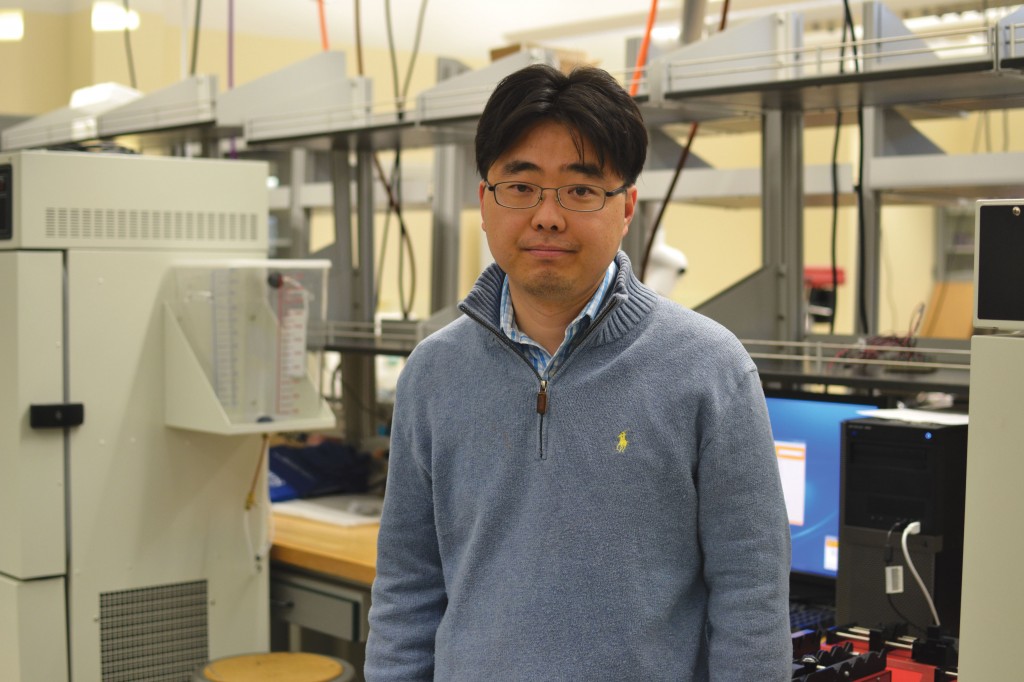
Two Binghamton University professors are taking the next step in making solar cells a more widespread electricity source.
Seokheun Choi, a BU engineering professor, worked with Gretchen Mahler, a graduate program director and assistant professor in the department of biomedical engineering, to design a biological solar cell that uses photosynthesis and cellular respiration to produce electrical power.
Choi and Mahler’s solar cell design is more effective than the currently accepted model because of a small, closed chamber that allows the bacteria in the cells to photosynthesize longer and increases their lifespan.
“Instead of the other cells, we have a microfluidic space which provides for an air-bubble trap in the device so that the bacteria store the produced carbon dioxide/oxygen through their photosynthesis and respiration for a longer time,” Choi wrote in an email. “Moreover, unlike other cells, this device was designed to have a closed system to air to avoid vulnerability to contamination.”
Choi said that the biological solar cell he designed continuously generates electricity from solar energy. The bacteria absorbs energy from light through photosynthesis and then produces oxygen and electrons, which can be converted into energy.
The cells can also work at night by producing electrons using bacterial respiration, a process that requires it to use some of the energy it initially gained from the organic compounds in the day time.
The professors received funding by Binghamton’s Transdisciplinary Areas of Excellence, a part of Binghamton University that stresses five areas of excellence that handle critical social, scientific, technological, economic, cultural and policy issues, to develop these solar cells.
According to Choi, the techniques for harnessing solar energy are still limited, as the processes can be costly. In addition to this, solar cells have a limited operational lifetime.
He said, however, that such new approaches are needed to efficiently convert solar energy into electricity, as advances in microbial fuel cell technology can make biological solar cells a more practical option.
Choi said that he and Mahler will continue to work on compacting the biological solar cells even further.
“My group is developing more compact and robust bio-solar cells but it will take more time to optimize everything,” Choi wrote. “I can’t say anything right now but it will be soon.”
BU biology professor Jeanne Lawless said that the ability to take light energy and convert it into usable energy is promising.
“Our current fossil fuels that we use can’t be replenished, and as we deplete those resources that we have we need to look at alternate resources like the sun’s energy,” Lawless said. “So if we tap into solar energy, and can covert it into a useable form, it could really help.”


